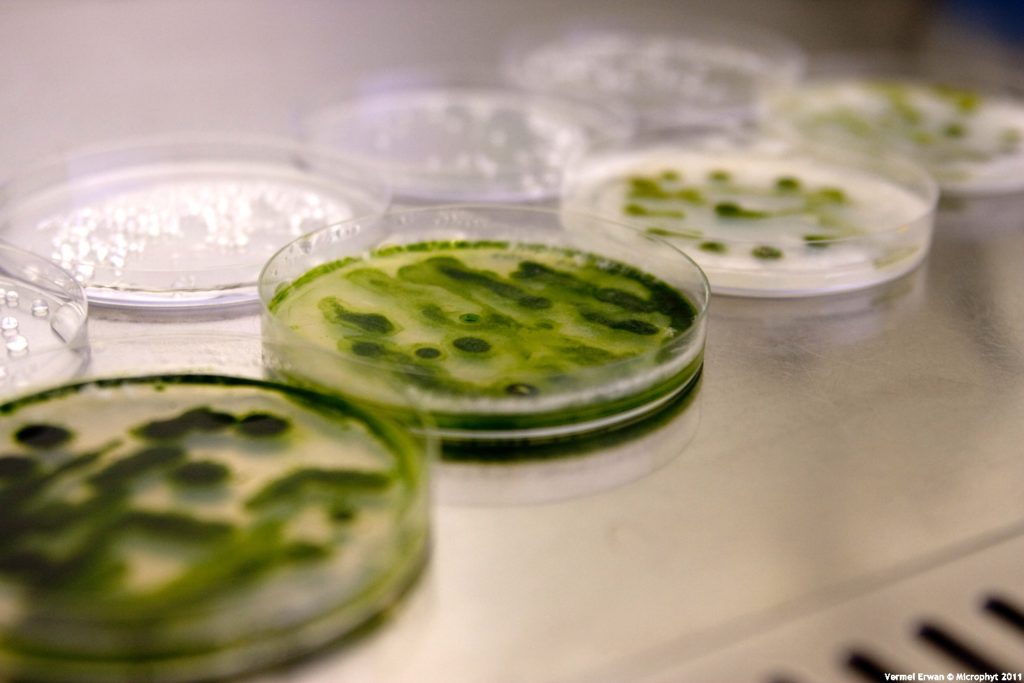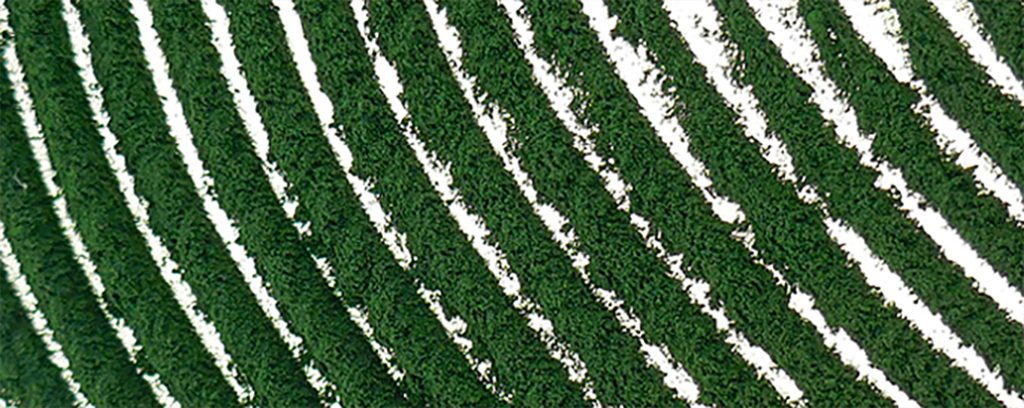

Nutrition & well-being: the power of microalgae
April 29, 2022
Microalgae are an ideal alternative when it comes to meeting food challenges and consumers’ high expectations in terms of a healthy and sustainable diet. Here’s an overview of these super ingredients with proven virtues.

Imagine a library with at least 30,000 works, each containing exceptional information to explore. That’s what the incredible biodiversity of microalgae has to offer. In fact, these microscopic marine plants are behind the very origin of life on earth. Their strength lies in their ability to produce and naturally concentrate an impressive quantity of active compounds, such as proteins (twice the amount contained in soya beans), carbohydrates (up to 20%), lipids, vitamins, trace elements (copper, iron, zinc), mineral salts, carotenoids and other antioxidants. Thanks to a world pioneering cultivation process, Microphyt extracts the best properties from these organisms, in sustainable conditions, for applications in the cosmetics, health and nutrition sectors.
MICROALGAE FOR A HEALTHIER AND SUSTAINABLE DIET
In pursuit of quality and transparency, more and more consumers are seeking to adopt a healthier diet, with due regard for environmental challenges. In France, this goal has resulted in a steady decrease in meat consumption (-12% over the past 10 years1) and a rise in flexitarianism, vegetarianism and even veganism. Microalgae are major allies which meet these requirements. Once incorporated into foods and food supplements, they promote well-being and health. All of this can be achieved without altering natural resources thanks to the unique and patented Microphyt’s hydrobiomimetic technology. In a closed environment that is monitored at each cultivation stage, photobioreactors recreate the natural hydrodynamics which enable microalgae to grow, all in a healthy environment, without GMOs, antibiotics or pesticides.

MICROALGAE: FATTY ACIDS AND PROTEINS GALORE
Microalgae are a natural source of DHA, a polyunsaturated fatty acid belonging to the omega-3 family, which is known to help the body function properly. For example, it slows down cognitive decline due to ageing and has a protective effect on the retina and on neurodegenerative diseases, etc. Microalgae also contain a large quantity of omega-6 essential fatty acids that are found in seeds, cereals, vegetable oils and some meats, and that our body cannot synthesize. Proteins are additional molecules of interest offered by microalgae. They are particularly appreciated by vegetarians and athletes in search of powerful plant proteins.
SPIRULINA AND CHLORELLA, THE HEADLINERS
Spirulina is one of the best-known species of microalgae, also referred to as a ‘food of the future’ by the UN2 since it helps to prevent malnutrition in developing countries. 90% of the 400 tons consumed in France each year is imported3, hence the need to carefully check the origin and quality of this cyanobacterium. Microphyt offers an organic version which is grown in Europe, thereby preserving its super-nutrients: proteins, including 20 amino acids, beta-carotene (a precursor of vitamin A), iron, gamma-linolenic acid (leader of the omega-6s)3 and phycocyanin, an antioxidant pigment. Measured against its sister algae, the freshwater microalgae chlorella stands up equally well. Not only is it rich in proteins, vitamin B12, calcium, magnesium and iron, but it also boosts the immune system and provides omega-3 essential polyunsaturated fatty acids. Spirulina and chlorella are frequently used in everyday food products (yogurt, pasta, tortillas, veggie burgers, etc.) enabling consumers to enjoy both their nutritional quality and their special characteristics (texturizing agent, pigment, etc.).

OTHER SUPER-POWERFUL MICROALGAE FOR THE FOOD INDUSTRY
Although spirulina and chlorella are the most commonly used microalgae in the food and nutraceutical sectors, it would be a shame to overlook other species which have proven qualities and a high added value.
Haematococcus pluvialis, a green freshwater microalga which grows naturally in temperate regions, is an extraordinary source of astaxanthin, the most powerful natural antioxidant to date. It is used primarily in natural food supplements which have an impact on vision and eye health, the brain’s cognitive functions, and the cardiovascular and immune system4.
The microalgae Phaeodactylum tricornutum contains several bioactive molecules, including fucoxanthin, which helps to maintain cognitive functions. In a closed environment, in a controlled, sustainable and environmentally-friendly way, Microphyt technology can extract a ‘super cocktail’ of natural active ingredients from Phaeodactylum tricornutum, whose effects on age-related cognitive decline (short-term memory loss, visuospatial memory loss) have been tested via seven preclinical studies.
Consumers and players in the food and nutraceutics sectors can therefore draw some wonderful active ingredients from the huge culture collection of microalgae, which not only have health benefits, but also play a positive role in preserving the environment. As such, Microphyt is applying its expertise to hundreds of microalgae with powers that are yet to be exploited.
Sources :
1Etude Crédoc CONSOMMATION & MODES DE VIE N°CMV300
2Déclaration ONU – 1974
3Fédération des spiruliniers de France
4Sawaki et al., 2002; Nakamura et al., 2004 ; Saito et al., 2012; Yasunori et al., 2005
Second Edition of Handbook of microalgal culture applied phycology and biotechnology, edited by Amons Richmond and Qiang Hu




